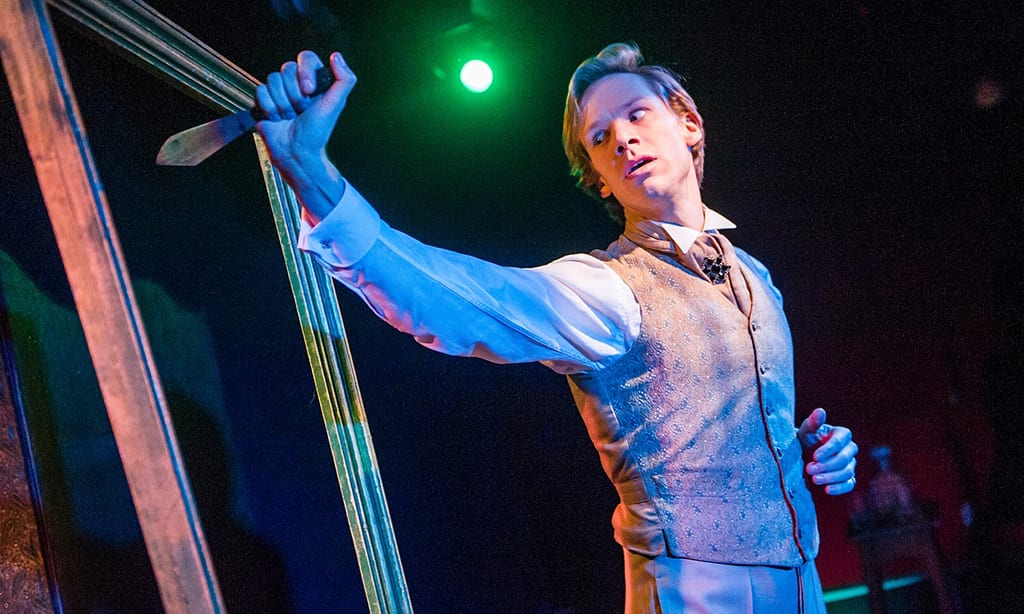The Picture of Dorian Gray is the story of a fashionable young man who sells his soul for eternal youth and beauty. He becomes the subject for Basil Hallward’s portrait, an artist infatuated with his sitter. He believes his beauty is the great secret to his work, which impresses Lord Henry Wotton, a witty aristocrat with a hedonistic world – view: ‘that beauty and sensual fulfillment are the only things worth pursuing in life’.
Dorian Gray learns that his beauty will one day fade and agrees to sell his soul so that his portrait ages while he remains young and free to pursue a sinful, libertine life. The portrait begins to record every bit of his immorality, indulgence and hedonism, causing Dorian Gray to murder its creator, Basil Hallward. His only moral salvation is to stab the painting, which reverts back to its original beauty while Dorian Gray is left hideous and frightening.
The small space creates an intimate atmosphere, drawing the audience closer to the drama of the play. The minimal nineteenth century furniture and paint brushes creates a domicile setting while the mysterious empty portrait serves as a constant reminder of the message Wilde wishes to convey. Mason’s heart –breaking longing for Dorian is played with a wonderful sensitivity while Warren – Thomas’s metamorphosis from a charming young man to a narcissistic, sinister villain is unsettling and chilling. The cross dressing of the male characters is highly comical and adds a light quality to the play.
All in all, Peter Craze’s adaptation of Oscar Wilde’s classic novel successfully explores ideas about art, idolization and morality through an authentic cast and brilliant acting.

